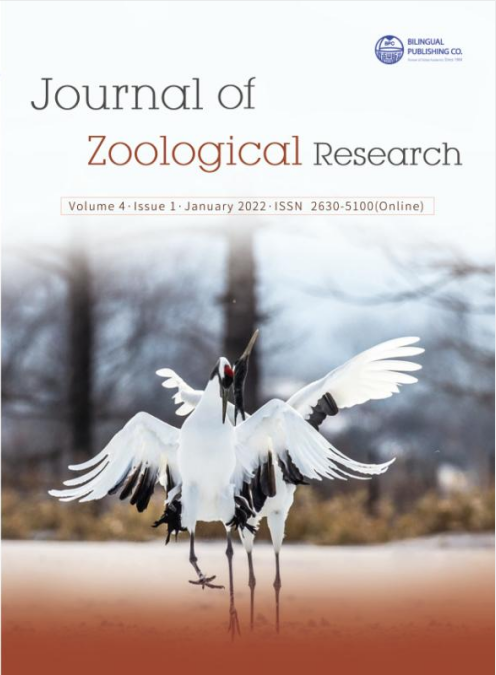Perspectives Concerning SARS-CoV-2 Transmission for the Application of the Livestock Breeding
DOI:
https://doi.org/10.30564/jzr.v4i1.4264Abstract
Viral transmission between animals and humans has been defined as Zoonosis and zooanthroponosis. The vaccine has been claimed to be the best tool to prevent viral epidemics. However, as learned from SARSCoV-2, vaccines cannot be the true answer to prevent viral infection for everyone. Some vaccinated persons are still reported to get infected. Viral mutation has been principally postulated to explain immune evasion. Questionable, why the mutated viral strain does not evade the immunity of everyone who has been vaccinated? Mutated viral strains cause various symptoms, nonsymptomatic to morbidity and mortality, in different individuals with more or less the same ratio as the original SARS-CoV-2. Approximately, 25-35% of the SARSCoV-2 detected individuals are asymptomatic, while 15- 20% developed severity and about 2-5% have critical symptoms [1,2]. Logically, the viral mutation could keep mutating in any part of its genome. The new variant might maintain infectivity in the same person and might develop to infect another person who once has not been susceptible to the original strain. Thus, the dynamics of viral infection could change from time to time. This requires a better explanation to lead us in the right direction to prevent the emergent virus either now or in the future.
References
[1] Oran, D.P., Topol, E.J., 2021. The proportion of SARS-CoV-2 infections that are asymptomatic: A systematic review. Ann Intern Med. 174(5), 655-62.
[2] Sakurai, A., Sasaki, T., Kato, S., et al., 2020. Natural History of Asymptomatic SARS-CoV-2 Infection. N Engl J Med. 383(9), 885-6.
[3] Asselta, R., Paraboschi, E.M., Mantovani, A., Duga, S., 2020. ACE-2 and TMPRSS2 variants and expression as candidates to sex and country differences in COVID-19 severity in Italy. Aging (Albany NY). 12(11), 10087-98.
[4] Latini, A., Agolini, E., Novelli, A., et al., 2020. COVID-19 and genetic variants of protein involved in the SARS-CoV-2 entry into the host cells. Genes (Basel). 11(9), 1010.
[5] Vardhan, S., Sahoo, S.K., 2021. Virtual screening by targeting proteolytic sites of furin and TMPRSS2 to propose potential compounds obstructing the entry of SARS-CoV-2 virus into human host cells. J Tradit Complement Med. Advance online publication.
[6] Lu, X., Gibbs, J.S., Hickman, H.D., et al., 2012. Endogenous viral antigen processing generates peptide-specific MHC class I cell-surface clusters. Proc Natl Acad Sci USA. 109(38), 15407-12.
[7] Romagnoli, P.A., Premenko-Lanier, M.F., Loria, G.D., Altman, J.D., 2013. CD8 T cell memory recall is enhanced by novel direct interactions with CD4 T cells enabled by MHC class II transferred from APCs. PLoS One. 8(2), e56999. DOI: https://doi.org/10.1371/journal.pone.0056999. Epub 2013 Feb 18. PMID: 23441229; PMCID: PMC3575485.
[8] Engels, N., Wienands, J., 2018 May. Memory control by the B cell antigen receptor. Immunol Rev. 283(1), 150-160. DOI: https://doi.org/10.1111/imr.12651. PMID: 29664567.
[9] Shimoda, M., Koni, P.A., 2007. MHC-restricted B-cell antigen presentation in memory B-cell maintenance and differentiation. Crit Rev Immunol. 27(1), 47-60. DOI: https://doi.org/10.1615/critrevimmunol.v27. i1.40. PMID: 17430096.
[10] Sun, X., Wang, T., Cai, D., et al., 2020. Cytokine storm intervention in the early stages of COVID-19 pneumonia. Cytokine Growth Factor Rev. 53, 38-42.
[11] Fara, A., Mitrev, Z., Rosalia, R.A., Assas, B.M., 2020. Cytokine storm and COVID-19: a chronicle of pro-inflammatory cytokines. Open Biol. 10(9), 200160.
Downloads
Issue
Article Type
License
Copyright and Licensing
The authors shall retain the copyright of their work but allow the Publisher to publish, copy, distribute, and convey the work.
Journal of Zoological Research publishes accepted manuscripts under Creative Commons Attribution-NonCommercial 4.0 International License (CC BY-NC 4.0). Authors who submit their papers for publication by Journal of Zoological Research agree to have the CC BY-NC 4.0 license applied to their work, and that anyone is allowed to reuse the article or part of it free of charge for non-commercial use. As long as you follow the license terms and original source is properly cited, anyone may copy, redistribute the material in any medium or format, remix, transform, and build upon the material.
License Policy for Reuse of Third-Party Materials
If a manuscript submitted to the journal contains the materials which are held in copyright by a third-party, authors are responsible for obtaining permissions from the copyright holder to reuse or republish any previously published figures, illustrations, charts, tables, photographs, and text excerpts, etc. When submitting a manuscript, official written proof of permission must be provided and clearly stated in the cover letter.
The editorial office of the journal has the right to reject/retract articles that reuse third-party materials without permission.
Journal Policies on Data Sharing
We encourage authors to share articles published in our journal to other data platforms, but only if it is noted that it has been published in this journal.




 Tirasak Pasharawipas
Tirasak Pasharawipas

